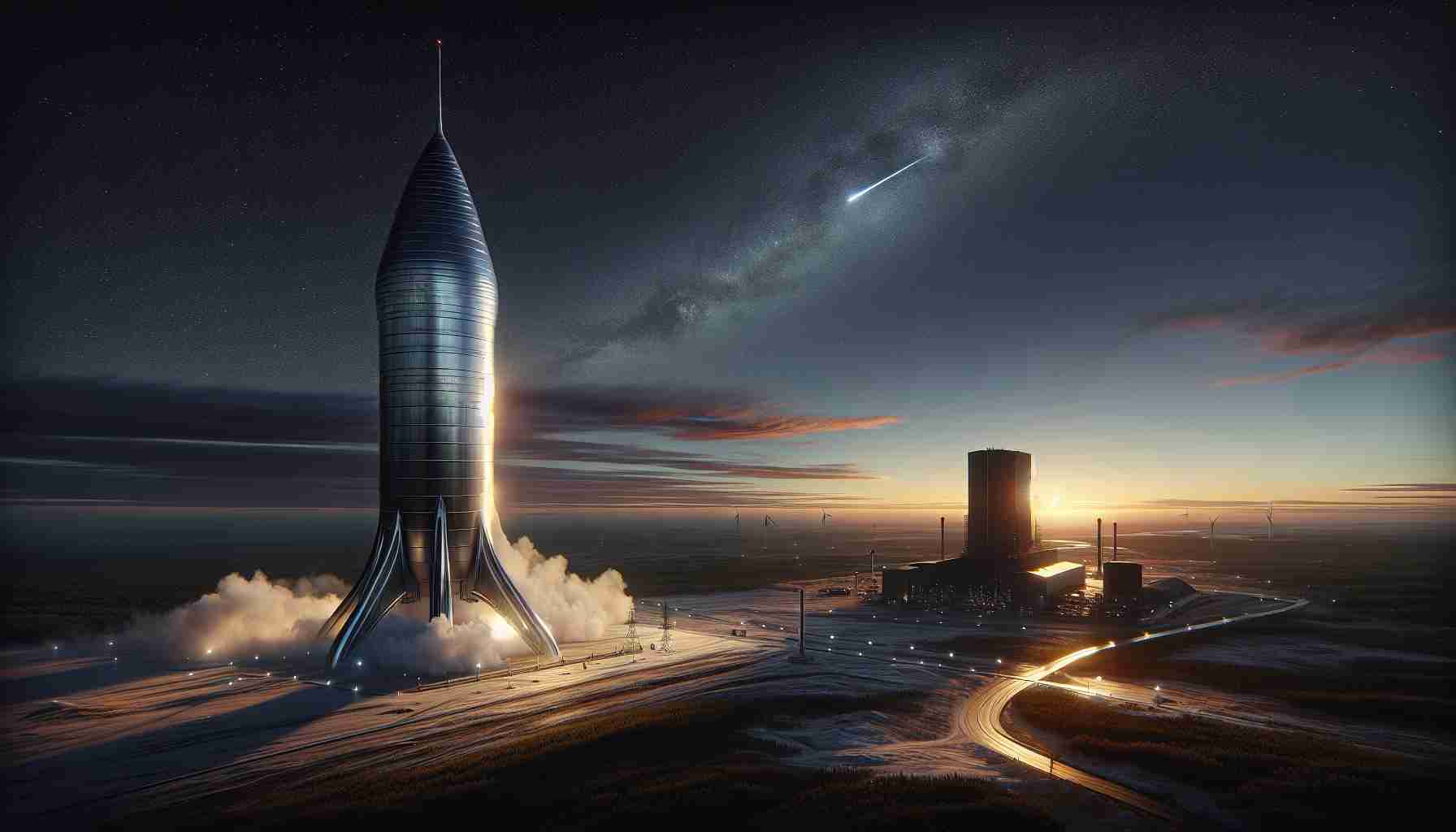
In a groundbreaking achievement, SpaceX successfully launched its highly anticipated Starship rocket on Sunday, marking a significant advancement in space exploration. The towering rocket, nearly 400 feet tall, lifted off at dawn from a launch site located in southern Texas, close to the Mexican border. Unlike previous missions, which resulted in the destruction of the Starship shortly after takeoff or during ocean recovery, this flight pushed the limits of what had been previously attempted.
In an impressive display of engineering, the company managed to bring the first-stage booster back to the ground safely at its launch pad. Utilizing innovative mechanisms known as “chopsticks,” massive metal arms were employed to capture the booster as it made its descent, a feat that left observers in awe. A SpaceX spokesperson near the launch site expressed exhilaration over the achievement, emphasizing the emotional impact of the moment.
Meanwhile, the Starship rocket continued its mission, circling the globe before setting course for a final splashdown in the Indian Ocean. This accomplishment builds on SpaceX’s experience with its Falcon 9 rockets, which have reliably returned boosters for years but typically land on floating platforms or distant concrete surfaces. The successful landing of the booster at the launch site represents a monumental step forward for reusable rocket technology and electrifies the future of space travel.
SpaceX Climbs New Heights with Starship Launch: A Historic Achievement in Space Exploration
In a remarkable milestone in the realm of aerospace innovation, SpaceX launched its much-anticipated Starship rocket, showcasing advancements that could revolutionize interstellar travel. The launch, which took place at dawn from a facility in southern Texas, signifies not just a triumph for SpaceX, but a leap forward that builds on decades of space exploration efforts.
Key Questions and Answers about the Starship Launch
What are the primary objectives of the Starship program?
The Starship program aims to establish a fully reusable spacecraft capable of carrying large payloads and humans to destinations beyond Earth, such as Mars and the Moon. It is essential for SpaceX’s long-term vision of enabling multi-planetary colonization.
What technology drives the success of Starship?
Starship incorporates cutting-edge technology, including the Raptor engine, a full-flow staged combustion engine that operates on methane and liquid oxygen. This technology not only enhances efficiency but is also scalable for large missions.
What were the major challenges faced during the launch?
One of the notable challenges was ensuring the safety of the crew and the vehicle during the flight. Additionally, the integration of the booster capture system, which uses “chopsticks,” proved to be a complex engineering endeavor. Additionally, SpaceX faced the scrutiny of regulatory bodies regarding flight safety and environmental impacts.
Advantages and Disadvantages of the Starship Program
Advantages:
1. Reusability: Starship aims to achieve unprecedented levels of reusability, significantly lowering the cost of space travel compared to traditional rockets.
2. Increased Payload Capacity: With the ability to carry up to 100 tons to low Earth orbit, Starship can facilitate large missions that may include satellite deployments and crewed missions to Mars.
3. Versatility: The spacecraft can be adapted for a variety of missions, including crew transport, cargo delivery, and scientific research, making it a valuable asset for future exploration.
Disadvantages:
1. High Development Costs: The R&D and testing phases require substantial financial investments, with expenses running into billions of dollars.
2. Technological Risks: As a first-of-its-kind vehicle, Starship faces numerous unknowns, including reliability issues and potential malfunctions during missions.
3. Environmental Concerns: The launch operations and manufacturing processes may pose risks to local ecosystems, raising questions about sustainability in rocket production.
Controversies and Public Response
The Starship program has not been without controversy. Some environmentalists have voiced concerns over the impact of launches on local wildlife and habitats, especially given the scale of operations planned in Texas. Moreover, the regulatory landscape remains complex as SpaceX navigates the requirements laid out by the Federal Aviation Administration (FAA) for launch approvals.
Public sentiment also varies; many supporters view this as a monumental step toward making humanity multi-planetary, while skeptics question the feasibility of such ambitious pursuits and the associated costs. However, despite the controversies, the launch of Starship represents a significant moment in modern space exploration, rekindling public interest and excitement in the future of human spaceflight.
For more information about SpaceX and its endeavors, visit SpaceX.



